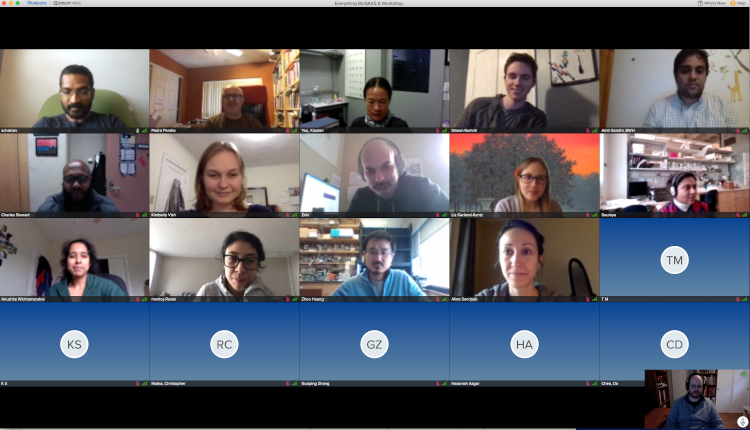
BioCAT held its sixth annual BioSAXS training course from 10/26/20-10/29/20. There were 24 remote participants and 6 instructors. The workshop was held entirely online, via BlueJeans, for ~4 hours each day. Before the workshop started, participants were able to mail samples to BioCAT for SAXS data collection. This data was then sent to them, and they were able to analyze it as part of the workshop.
Day one started off with an excellent overview of the basic physics of SAXS and what kind of information you can obtain from the technique by Dr. Richard Gillilan (BioSAXS beamline, CHESS). This was followed by a talk from Dr. Kushol Gupta (Penn. State) going over the extremely important and sometimes overlooked steps of how to actually plan and perform SAXS experiments. He covered everything from planning what data you want to collect to sample preparation for the experiment, to complementary biophysical techniques for verifying your results. Following that Dr. Jesse Hopkins (BioCAT) gave a lecture covering the details on what a scattering profile is and basic SAXS data analysis and validation. The first day ended with a Q&A with Drs. Gupta, Hopkins, and Chakravarthy and the participants.
Day two started with an overview of SAXS data processing software by Dr. Hopkins. Then the workshop broke into smaller groups, and students spent several hours working through detailed self-guided tutorials that took them through basic SAXS data processing and validation. Each small group had an expert available to answer any questions that came up. Participants then returned to the large group, and Dr. Steve Meisburger (Cornell U.) gave a talk on SEC-SAXS, describing what it is, why it’s useful, how to analyze the data, common issues, and some advanced analysis methods. The rest of the day was spent in the small groups working on a tutorial covering SEC-SAXS data analysis.
Day three started with a talk by Dr. Gupta about calculating theoretical SAXS profiles from models and reconstructing 3D models from SAXS data. Dr. Hopkins then gave a talk on best practices for publishing SAXS data. This was followed by a talk from Dr. Chakravarthy on time resolved SAXS and how and what you can do with the technique at BioCAT. The rest of the day was spent in small groups doing a tutorial on 3D reconstructions and calculating theoretical SAXS profiles from models.
Day four started with a series of lectures on advanced applications and analysis of SAXS data. Dr. Chakravarthy started with a lecture introducing the principles and practice of rigid body modeling with SAXS data. Dr. Hopkins gave a talk about analyzing flexible and disordered systems using SAXS, with a particular focus on ensemble analysis methods. Dr. Javier Perez (SWING, SOLIEL) talked about his work pushing the frontiers of what you can do with SAXS data from membrane proteins. Finally, Dr. Tobin Sosnick (U. Chicago) gave a talk on using SAXS to analyze intrinsically disordered proteins. In the afternoon there was a small group session focusing on data analysis of the SAXS data collected on the samples they sent as part of the workshop. The workshop finished with a brief lecture from Dr. Chakravarthy on the practical steps to apply for beamtime at BioCAT, and a large group Q&A with Drs. Chakravarthy and Hopkins.